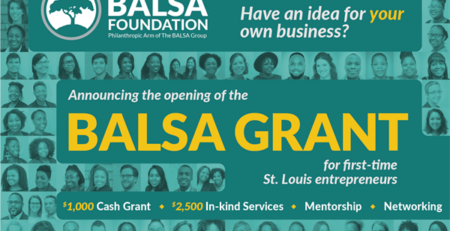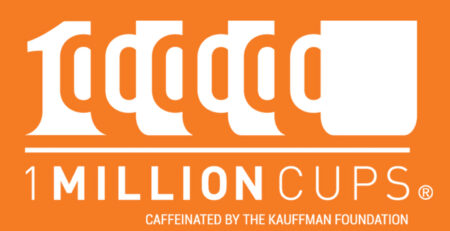Your Small Business PPP Loan Applications Is Approved … Now What?
Adapted with permission from a blog post on the RubinBrown website.
The Paycheck Protection Program (PPP loan) was created to provide loans to help businesses keep their workforce employed during the coronavirus (COVID-19) crisis. What makes a PPP loan so enticing is the potential for it to be forgiven up to 100%. The challenge is that banks and small businesses have not received definitive guidance on how the PPP loan will be forgiven. This can add anxiety to an already difficult situation, as business owners are left wondering what will be required to have this loan forgiven.
Here is what we at RubinBrown know about PPP loan forgiveness …
After the loan is funded, to qualify for loan forgiveness, there is a two-step process:
1. Businesses will need to aggregate the total payments for the 8-week period, after the date of funding (the “8-week post-funding period”), for payroll costs, interest payments, rent payments and certain utilities.
2. Then, compare the organizations average monthly full-time equivalent (FTE) during the 8-week post-funding period to a “comparison period,” defined as:
- Average monthly FTE from Feb. 15, 2019, through June 30, 2019
- Average monthly FTE from Jan. 1, 2020, through Feb. 29, 2020.
- Seasonal employers must use a comparison period of Feb. 15, 2019, through June 30, 2019
[[CTA]]
*Seasonal employers must use a comparison period of Feb. 15, 2019, through June 30, 2019.
-
Those applying should note that the Small Business Administration said no more than 25% of forgiveness can be from non-payroll costs. The SBA has also clarified that any interest that accrues before the loan is forgiven or paid will be at the borrower’s expense. - Full forgiveness will not be available if you reduce FTEs during the covered period, or reduce pay of an employee making less than $100,000 by more than 25%.
- Your lender will determine the loan forgiveness amount and upon receipt of the forgiveness request and necessary documents, will have 60 days to approve or deny the forgiveness.
What we don’t know yet is what evidence will be required to demonstrate compliance with the terms and conditions of the PPP loan and what process the banks will use to evaluate how much of the loan proceeds are eligible for forgiveness. Until there is better guidance from the Treasury or the SBA on exactly what information will be needed to determine loan forgiveness, this article aims to give practical suggestions of what you can do now. Here are 10 suggestions to consider right now:
1. Create a PPP Loan File
This file should contain all correspondence, evidence, receipts and support.
2. Track Your Average Monthly FTE
PPP loans are eligible for forgiveness if your organization’s average monthly FTE during the 8-week post-funding period is the same or higher than one of the approved comparison period dates. If the average monthly FTE in the 8-week post-funding period is less than the average FTE in the comparison period, plan that the forgiveness amount will be adjusted downward proportionately.
From a practical standpoint, we, RubinBrown, suggest tracking FTE’s for each of your normal pay periods starting from the earliest date of the approved comparison periods through the date the PPP loan forgiveness is approved. Tracking FTE’s in this manner will allow for an easier evaluation of what comparison period is more beneficial to your organization and allows you additional flexibility should revised guidance be issued.
If you are rehiring employees previously furloughed or laid-off as a result of receiving this loan, you should clearly track the rehire statistics.
3. Track Payroll Costs
Payroll costs during the 8-week post-funding period must be 76% or more of the comparison period average to be eligible for full forgiveness.
Similar to #2, we at RubinBrown suggest tracking payroll for each of your normal pay periods, and payroll reports and filings created in the normal course of business, starting from the earliest date of the approved comparison periods through the date the PPP loan forgiveness is approved.
Tracking payroll costs in this manner will allow for an easier evaluation of what comparison period is more beneficial to your organization and allows you additional flexibility should revised guidance be issued. Ad-hoc analysis and adjustments can be made if necessary, but the ability to reconcile to your organization’s payroll records and filings will be important.
Such adjustments may be necessary to the extent you have employees whose wages exceed $100,000 on an annual basis.
4. Track Qualified Non-Payroll Costs
The PPP loan allows for up to 25% of the loan proceeds to be spent on non-payroll costs, such as:
- Mortgage interest, on loans originating before Feb. 15, 2020
- Rent, under lease agreements in force before Feb. 15, 2020
- Utilities, for which service began before Feb. 15, 2020
Keep a detailed log of these payments during the 8-week post-funding period. From a practical standpoint, keep related documentation, including payment remittances, statements, or invoices.
5. Create a Transaction Log
Create a detailed log of the uses of the loan proceeds. The log should clearly identify when and how the proceeds were used.
Prepare a reconciliation from the day the proceeds were received through the date proceeds were depleted. Some organizations may want to set up a separate checking account that receives and disburses the PPP loan proceeds.
Others may want to create a separate cash account in their general ledger. Regardless, the objective is to streamline the audit tracking, eliminate commingling and provide additional transparency during your loan forgiveness review with the bank.
6. Consider Implications of other CARES Act Provisions
There may be other CARES Act provisions that your organization may be eligible for, that could impact the timing and extent of your PPP loan forgiveness. For example:
- If you are receiving PPP loan and Economic Injury Disaster Loan (EIDL) proceeds, keep detailed records about the uses of each – we recommend you do not pay any payroll costs with EIDL proceeds if you have received a PPP loan.
- If you received the $10,000 EIDL emergency grant those funds will reduce the amount of forgiveness you will receive.
7. Create a PPP Loan Forgiveness Model
Using the information you gathered in Steps 1-5 above, create a model to estimate what percentage of the PPP loan may not be eligible for forgiveness. Consider the cash flow impact accordingly.
8. Create or Update Cash Flow Models
Critically evaluate your assumptions driving revenue and costs as your organization tries to return to pre-pandemic operations. While scenarios will be unique for each organization type and industry, we recommend modeling the following scenarios:
- Deferral of loan payments for 6 months (principal and interest)
- Repayment of 100% of interest accrued during the first 6 months
- Forgiveness date is 3, 6, 9 and 12 months after receipt of proceeds
- Loan is not forgiven and needs to be repaid in 24 months after receipt of proceeds
- Amortize partial loan forgiveness payments of principal and interest over 18 months leading to maturity
- Headcount fluctuation percentages based on the “bounce back” of your operations
9. Try Something New
Organizations may have employees on payroll under the PPP loan that are unable to work in their previous framework. If there are other organizational tasks or processes that can be evaluated and changed during this “down-time,” consider what can be done now that will help the organization later and determine if those unable to work in their previous roles could help with these projects.
10. Expect Change
Remain calm, be prepared and be patient with the process. Remember, it is a new program and new processes are being rolled out quickly to help the employers take care of their employees.
Keep your eyes open for additional programs for you and your organization.
Readers should not act upon information presented without individual professional consultation.
Any federal tax advice contained in this communication (including any attachments): (i) is intended for your use only; (ii) is based on the accuracy and completeness of the facts you have provided us; and (iii) may not be relied upon to avoid penalties.











Leave a Reply